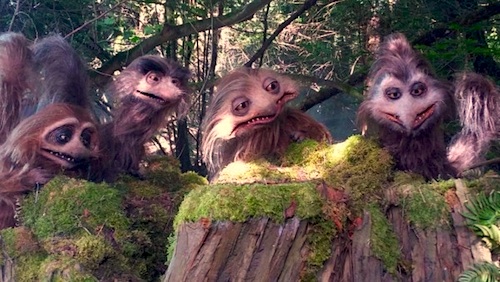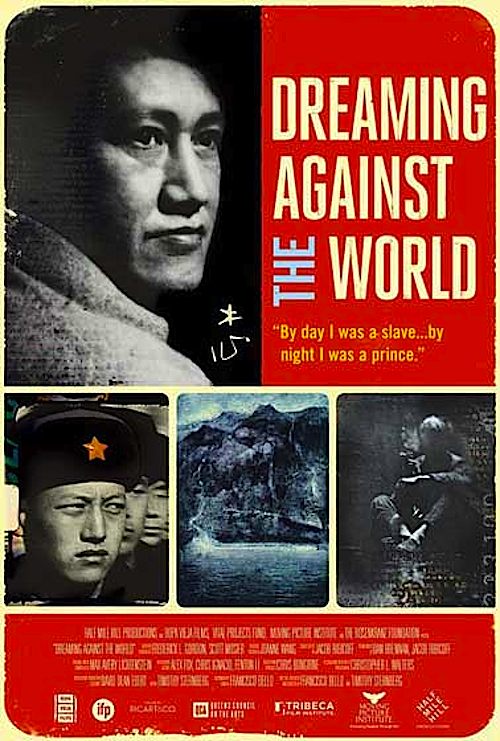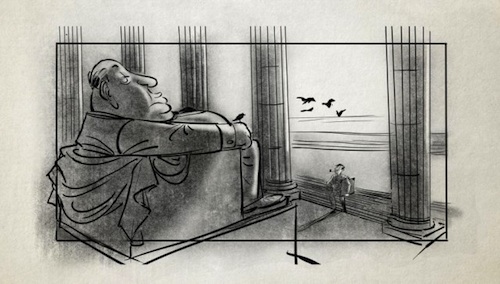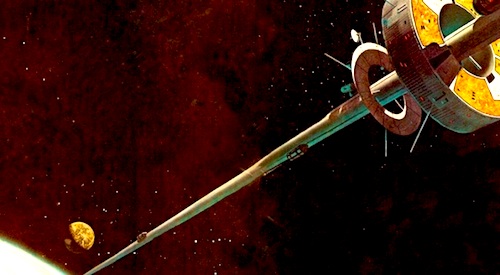By Joe Bendel. Making a film about Guy Maddin is an intimidating prospect. There is no way you can get away with conventional talking heads when profiling arguably the most distinctive stylist in world cinema today. Fortunately, Yves Montmayeur recognized the challenge and brought his A-game for The 1,000 Eyes of Dr. Maddin, which screens today as part of the 2015 RIDM: Montreal International Documentary Festival.
Before going any further, fans should be duly reassured Udo Kier most definitely appears in 1,000 Eyes. It wouldn’t be a Maddin film without him. As the documentary opens, he and Geraldine Chaplin are participating in Maddin’s séance performance art-installation piece at the Pompidou Center. They are trying to raise the spirits of aborted films that were never produced. Maddin’s persistent fascination with films that never were has proved a rich vein for him to mine, also partly inspiring the mind-blowing The Forbidden Room.
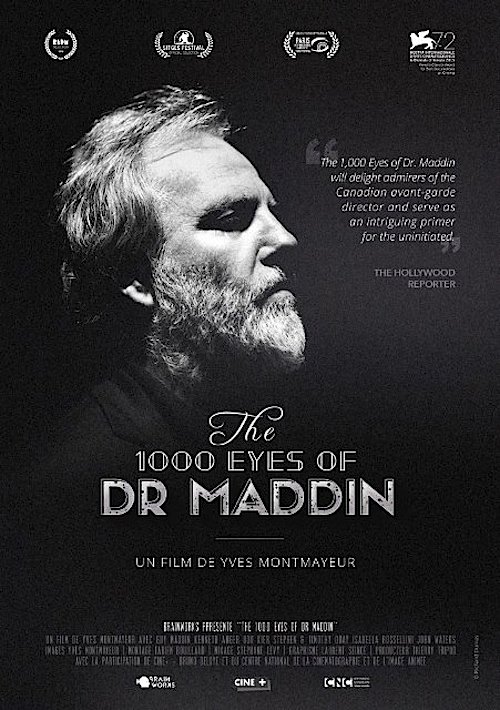 Somewhat surprisingly, Montmayeur has a clear affinity for the more macabre aspects of Maddin’s films, which is not how most of his fans typically think of the surrealist. However, he also explores Maddin’s playfully transgressive sexual themes, which are always hard to lose sight of. Throughout the doc, Montmayeur shrewdly selects film clips for illustrative purposes. However, the auteur’s admirers will really respect the way Montmayeur manages to blend his documentary footage together with Maddin’s films and imagery in accordance the spirit of his subject’s visions. Maddin is also unceasingly helpful, talking seriously about his work, while maintaining a self-deprecating sense of humor. Maddin semi-regular Isabella Rossellini adds some star power, while John Waters and Kenneth Anger further bolster its cult appeal.
Somewhat surprisingly, Montmayeur has a clear affinity for the more macabre aspects of Maddin’s films, which is not how most of his fans typically think of the surrealist. However, he also explores Maddin’s playfully transgressive sexual themes, which are always hard to lose sight of. Throughout the doc, Montmayeur shrewdly selects film clips for illustrative purposes. However, the auteur’s admirers will really respect the way Montmayeur manages to blend his documentary footage together with Maddin’s films and imagery in accordance the spirit of his subject’s visions. Maddin is also unceasingly helpful, talking seriously about his work, while maintaining a self-deprecating sense of humor. Maddin semi-regular Isabella Rossellini adds some star power, while John Waters and Kenneth Anger further bolster its cult appeal.
Although far from an exhaustive survey, Montmayeur paints a robust portrait of the filmmaker and the tone and motifs of his work. Maddin’s films are bizarrely seductive. Despite their often intentional fakeness, they somehow feel like a very real alternate reality. If you watch My Winnipeg, you will be convinced every strange and absurd story really happened in his Manitoba hometown. Montmayeur conveys a sense of the trippy, intoxicating power his best films have, which is quite an accomplishment. Running an economic sixty-five minutes, it delves reasonably deeply into the Maddin aesthetic without belaboring its points or repeating itself. Recommended for Maddin and Kier fans, The 1,000 Eyes of Dr. Maddin screens today (11/20) and Sunday (11/22), as part of this year’s RIDM in Montreal.
LFM GRADE: B+
Posted on November 20th, 2015 at 1:47pm.
